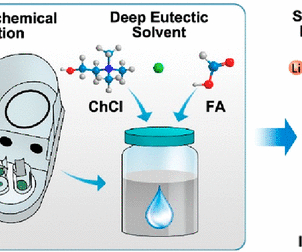Novel high capacity anode material for Li-ion batteries: hydroxylamine hydrochloride
Green Car Congress
SEPTEMBER 5, 2014
Researchers from Ningbo University in China report the first use of hydroxylamine hydrochloride (H 3 NOHCl) as anode material for lithium-ion batteries in a paper in the Journal of Power Sources. Electrochemical testing shows that H 3 NOHCl with particle size of 4–12 ?m m can deliver an initial charge capacity of 1018.6








































Let's personalize your content